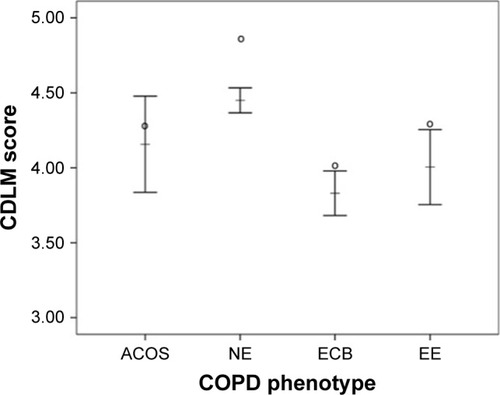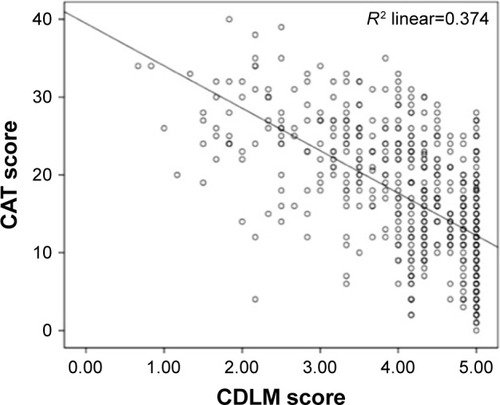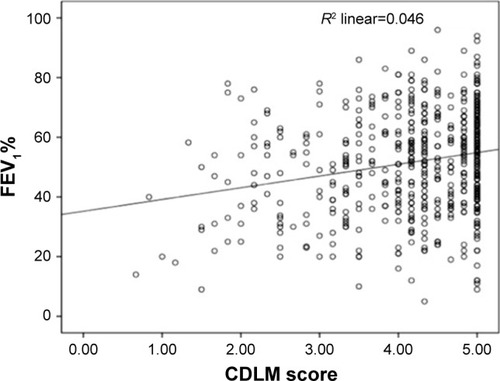Figures & data
Table 1 Sociodemographic and clinical characteristics according to CDLM scores
Figure 1 CDLM score according to clinical COPD phenotype.
Abbreviations: ACOS, asthma–COPD overlap syndrome; CDLM, Capacity of Daily Living in the Morning questionnaire; ECB, exacerbator with chronic bronchitis; EE, exacerbator with emphysema; NE, non-exacerbator.

Figure 2 Linear relationship between CAT and CDLM score.
Abbreviations: CAT, COPD assessment test; CDLM, Capacity of Daily Living in the Morning questionnaire.

Figure 3 Linear relationship between FEV1 (%) and CDLM score.
Abbreviation: CDLM, Capacity of Daily Living in the Morning questionnaire.

Figure 4 CDLM score according to BODEx index.
Abbreviations: BODEx, Body mass index, airflow Obstruction, Dyspnea, Exacerbations; CDLM, Capacity of Daily Living in the Morning questionnaire.

Table 2 Stepwise multivariate multinomial regression model for CDLM tertiles
